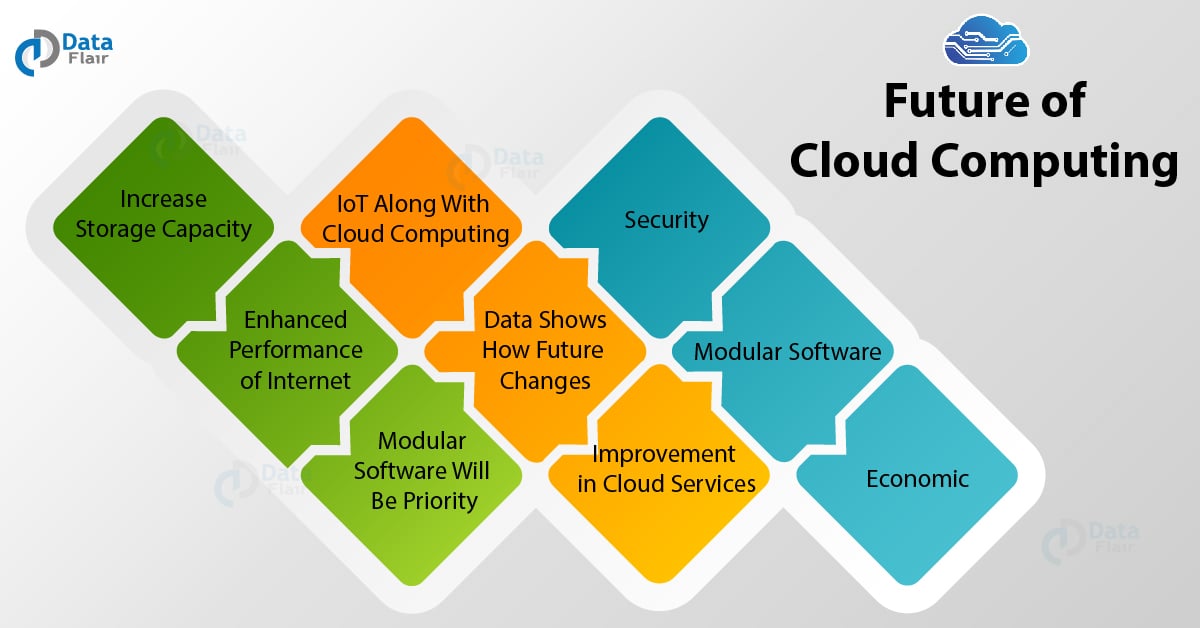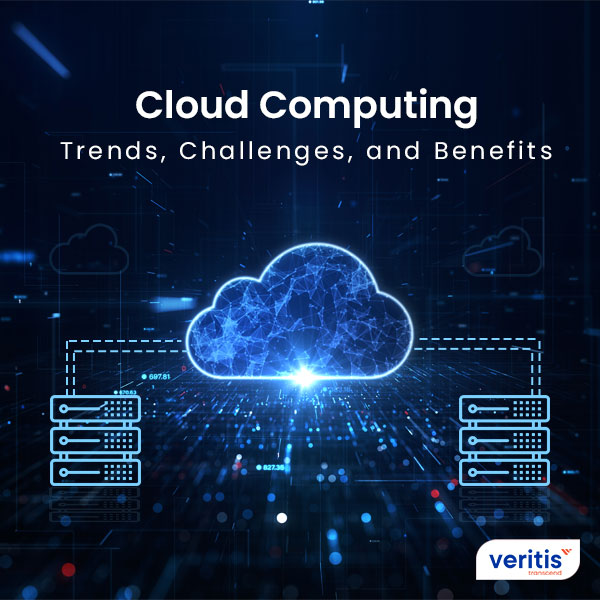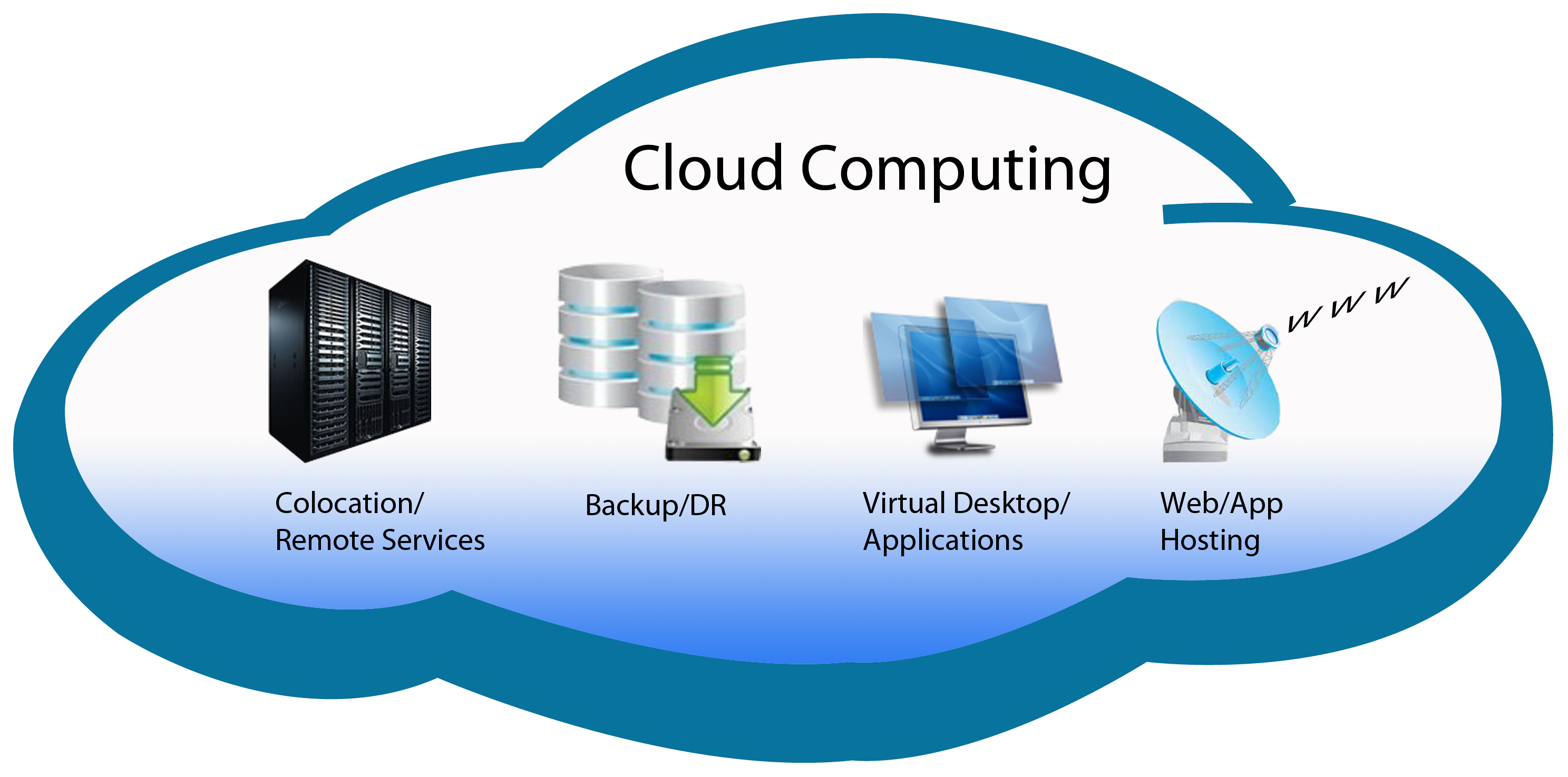
I. Introduction to Cloud Computing
What is Cloud Computing?
Cloud computing refers to the practice of utilizing remote servers hosted on the internet to store, manage, and process data. It allows businesses to access and use computing resources, such as servers, storage, databases, software, and applications, without the need for on-site infrastructure. In other words, cloud computing enables businesses to store and access data and applications over the internet instead of locally on their own physical servers or computers. This shift to the cloud has revolutionized the way businesses operate and has become an integral part of modern business technology.
Benefits of Cloud Computing
There are several benefits of adopting cloud computing for businesses:
1. Scalability: Cloud computing offers businesses the flexibility to scale their resources up or down based on their needs. Whether your business needs more storage space, processing power, or users, the cloud can easily accommodate these changes without the need for significant investments in hardware or infrastructure.
2. Cost Savings: By leveraging cloud computing, businesses can avoid the upfront costs associated with purchasing and maintaining physical servers. Instead, they can choose from various subscription-based pricing models, paying only for the resources they use. This eliminates the need for expensive hardware, reduces IT staff, and decreases energy costs.
3. Accessibility: Cloud computing allows businesses to access their data and applications from anywhere with an internet connection. This level of accessibility is particularly beneficial for remote teams, allowing them to collaborate in real time and access business-critical information from any location.
4. Data Security and Disaster Recovery: Cloud service providers implement robust security measures to protect data from unauthorized access and potential threats. They also offer automatic backups and disaster recovery solutions to ensure that businesses can quickly recover from data loss or system failures.
5. Improved Collaboration: Cloud-based applications and platforms facilitate seamless collaboration among team members. Employees can work on the same documents, share files, and communicate in real time, enhancing productivity and efficiency.
By embracing cloud computing, businesses can streamline their operations, reduce costs, and gain a competitive edge in today’s rapidly evolving digital landscape.
 Source: www.techrepublic.com
Source: www.techrepublic.comII. Types of Cloud Computing Models
There are several types of cloud computing models that businesses can choose from based on their specific needs and requirements. These models include:
Public Cloud
The public cloud model is the most common and widely used form of cloud computing. In this model, businesses utilize resources and services provided by third-party cloud service providers. These providers own and operate the infrastructure, and businesses access and use these resources over the internet. Public cloud services are typically offered on a pay-as-you-go basis, allowing businesses to scale their resources up or down as needed. Some popular public cloud providers include Amazon Web Services (AWS), Microsoft Azure, and Google Cloud Platform.
Private Cloud
The private cloud model is dedicated to a single organization. It is a cloud infrastructure that is built, owned, and managed by the organization itself or a third-party provider. In this model, the infrastructure is not shared with other organizations, offering enhanced security and control over data and resources. Private cloud solutions can be hosted on-premises or in a dedicated off-site facility. Private clouds are often used by businesses that have specific security or compliance requirements or those that need greater control over their data and infrastructure.
Hybrid Cloud
The hybrid cloud model combines elements of both public and private clouds. It allows businesses to leverage the benefits of both models to meet their requirements. In a hybrid cloud environment, businesses can run certain workloads and store data on their private cloud infrastructure while utilizing public cloud resources for other workloads. This model provides flexibility, scalability, and the ability to optimize resource allocation. Hybrid cloud solutions are especially beneficial for businesses that have varying computing needs, seasonal demands, or require a combination of security and cost-effectiveness.
These different cloud computing models offer businesses the flexibility to choose the option that best suits their needs, helping them optimize their IT infrastructure and drive innovation in the future.
 Source: data-flair.training
Source: data-flair.trainingIII. Key Components of Cloud Computing
Cloud computing is composed of several key components that enable businesses to harness the power of the cloud. These components include:
1. Infrastructure as a Service (IaaS)
Infrastructure as a Service (IaaS) provides businesses with virtualized computing resources over the internet. Some key features of IaaS include:
- Flexibility: IaaS allows businesses to scale their infrastructure up or down depending on their needs, without the need for physical hardware upgrades.
- Cost-effectiveness: With IaaS, businesses only pay for the computing resources they use, eliminating the need for costly upfront investments in hardware and maintenance.
- Accessibility: IaaS enables businesses to access their infrastructure from anywhere with an internet connection, providing flexibility and remote access capabilities.
2. Platform as a Service (PaaS)
Platform as a Service (PaaS) provides businesses with a platform for developing, testing, and deploying applications. Some key features of PaaS include:
- Simplified development: PaaS offers pre-configured development environments and tools, speeding up the application development process.
- Scalability: PaaS allows businesses to easily scale their application as needed, without the need for complex infrastructure management.
- Collaboration: PaaS platforms often include collaboration tools that facilitate teamwork and streamline the development process.
3. Software as a Service (SaaS)
Software as a Service (SaaS) provides businesses with access to software applications over the internet. Some key features of SaaS include:
- Convenience: SaaS applications can be accessed from any device with an internet connection, providing flexibility and convenience for users.
- Cost-effectiveness: SaaS eliminates the need for businesses to purchase and maintain software licenses, reducing upfront costs.
- Automatic updates: SaaS providers typically handle software updates and maintenance, ensuring that businesses always have access to the latest features and enhancements.
These key components of cloud computing are revolutionizing the way businesses operate by providing cost-effective, scalable, and flexible solutions. By leveraging the power of the cloud, businesses can focus on their core competencies and drive innovation in the digital age.
 Source: www.veritis.com
Source: www.veritis.comIV. Advantages of Cloud Computing
Scalability and Flexibility
Cloud computing offers several advantages that make it the future of business technology. One of the key benefits is scalability and flexibility:
- Scalability: Cloud computing allows businesses to easily scale their resources up or down based on their needs. This means that businesses can quickly adapt to changing demands and avoid the need for expensive hardware upgrades.
- Flexibility: With cloud computing, employees can access applications and data from anywhere and on any device with an internet connection. This flexibility enables businesses to have remote workers, collaborate on projects, and increase productivity.
Cost Savings
Another advantage of cloud computing is cost savings. Here are some ways businesses can save money:
- Reduced IT Costs: With cloud computing, businesses no longer need to invest in expensive hardware and software. Instead, they can pay for the services they need on a subscription basis.
- Lower Maintenance Costs: Cloud service providers handle the maintenance and updates of the infrastructure, reducing the burden on businesses. This allows businesses to focus on their core activities.
- Pay-as-you-go Pricing: Cloud computing typically operates on a pay-as-you-go pricing model, where businesses only pay for the resources and services they use. This allows businesses to adjust their costs based on their actual usage.
- Energy Savings: Cloud computing typically requires less energy consumption compared to traditional data centers. This can result in significant cost savings for businesses while also being more environmentally friendly.
Overall, the scalability, flexibility, and cost savings offered by cloud computing make it an attractive solution for businesses of all sizes. As technology continues to advance, cloud computing is likely to play an increasingly important role in shaping the future of business technology.
 Source: www.31west.net
Source: www.31west.netV. Challenges and Concerns in Cloud Computing
While cloud computing offers numerous benefits to businesses, there are also several challenges and concerns that need to be addressed. Here are two of the most significant challenges in cloud computing:
Security and Privacy
With businesses storing sensitive data on the cloud, security and privacy are major concerns. Companies need to ensure that their data is protected from unauthorized access and breaches. Some of the security challenges in cloud computing include:
- Data Breaches: Malicious actors can attempt to gain unauthorized access to sensitive data stored in the cloud. Companies need to implement robust security measures such as encryption and multi-factor authentication to prevent data breaches.
- Data Loss: There is always a risk of data loss, whether due to technical failures or natural disasters. Businesses need to have backup and recovery plans in place to ensure the continuity of their operations.
- Compliance: Companies operating in regulated industries need to comply with specific data protection and privacy regulations. They must ensure that their cloud services providers adhere to these regulations to avoid any legal and financial consequences.
It’s important for businesses to carefully choose their cloud service providers and work closely with them to address security and privacy concerns. Regular audits and risk assessments can help identify and mitigate any vulnerabilities in the cloud environment.
Data Loss and Recovery
Another significant challenge in cloud computing is the risk of data loss and the ability to recover data if such an event occurs. Data loss can happen due to various reasons, such as hardware failures, software bugs, or human errors. Here are some concerns regarding data loss and recovery in cloud computing:
- Vendor Reliability: Companies need to ensure that their cloud service providers have robust backup and disaster recovery mechanisms in place. They should also consider the reputation and reliability of the providers before entrusting them with their critical data.
- Backup and Recovery Strategies: Businesses must have their own backup and recovery strategies in place, in addition to the services offered by the cloud service provider. This ensures that they have control over their data and can quickly recover it in case of any issues.
- Data Portability: It’s important for businesses to have the ability to easily migrate their data from one cloud provider to another or to bring it back in-house if necessary. This avoids vendor lock-in and provides flexibility in managing data.
By considering these challenges and implementing appropriate measures, businesses can navigate the cloud computing landscape with confidence and leverage the advantages it offers to drive innovation and growth.
 Source: ars.els-cdn.com
Source: ars.els-cdn.comVII. Future Trends in Cloud Computing
As technology continues to advance, cloud computing is set to shape the future of businesses in a significant way. Here are some trends to look out for:
Internet of Things (IoT) and Cloud Integration
The Internet of Things (IoT) is an increasingly popular concept that involves connecting everyday objects to the internet for data collection and analysis. With IoT devices generating massive amounts of data, cloud computing provides the perfect platform for storing and processing this data. Integrating IoT with the cloud allows businesses to leverage real-time data insights, enhance operational efficiency, and improve decision-making processes.
Artificial Intelligence and Machine Learning in the Cloud
Artificial Intelligence (AI) and Machine Learning (ML) are revolutionizing the way businesses operate and make decisions. Cloud computing plays a crucial role in facilitating the development and deployment of AI and ML models. Cloud platforms offer the scalability, processing power, and storage required to train and run complex AI algorithms. This enables businesses to leverage AI and ML technologies to automate processes, gain insights from vast amounts of data, and enhance customer experiences.
Serverless Computing
Serverless computing is an emerging trend in cloud computing that allows businesses to focus on writing and deploying code without worrying about server management. With serverless computing, businesses pay only for the resources actually used and automatically scale up or down based on demand. This eliminates the need for businesses to provision and manage servers, reducing costs and increasing scalability. Serverless computing is particularly beneficial for businesses with variable workloads or those looking to optimize resource utilization.
These trends demonstrate the continuing evolution of cloud computing and its potential to transform businesses across industries. By embracing these trends, businesses can stay ahead of the curve and leverage cloud technology to drive innovation, agility, and growth.
 Source: techcrunch.com
Source: techcrunch.comVIII. Cloud Computing Providers
When it comes to cloud computing, there are several top providers that businesses can rely on for their technology needs. Here are three of the most popular cloud computing providers:
Amazon Web Services (AWS)
Amazon Web Services (AWS) is the leading cloud computing provider in terms of market share and infrastructure. AWS offers a wide range of services, including computing power, storage, databases, and analytics. It provides scalable solutions that can accommodate businesses of all sizes, from start-ups to large enterprises. With its global network of data centers, AWS ensures high availability and reliability for its clients. It also offers advanced security features and tools to protect sensitive data.
Microsoft Azure
Microsoft Azure is another major player in the cloud computing market. It offers a comprehensive suite of cloud services, including virtual machines, storage, databases, AI, and analytics. Azure is known for its integration with Microsoft’s other products, such as Office 365 and Windows Server. It provides a hybrid cloud solution, allowing businesses to seamlessly connect their on-premises infrastructure with Azure. With its strong focus on compliance and security, Azure is a popular choice for businesses in regulated industries.
Google Cloud Platform
Google Cloud Platform (GCP) is a rapidly growing cloud computing provider that offers a wide range of services for businesses. GCP provides infrastructure, storage, machine learning, and data analytics solutions. It is known for its innovative technologies, such as Kubernetes for container orchestration and BigQuery for data warehousing. GCP’s global network of data centers ensures low-latency access to its services. It also offers flexible pricing options and discounts for sustained usage.
These cloud computing providers offer businesses the flexibility, scalability, and reliability they need to support their technological infrastructure. Whether it’s AWS, Azure, or GCP, businesses can leverage cloud computing to streamline their operations, enhance collaboration, and stay ahead in a highly competitive market.
 Source: d1n03xfl93cx9q.cloudfront.net
Source: d1n03xfl93cx9q.cloudfront.netX. Conclusion
The Future of Cloud Computing in Business Technology
Cloud computing is, without a doubt, the future of business technology. As businesses continue to innovate and prioritize mobility, flexibility, and scalability, cloud computing provides the perfect solution for meeting these needs. Here are a few key points to consider regarding the future of cloud computing in business technology:
- Cost Efficiency: Cloud computing offers cost efficiency by eliminating the need for expensive physical servers and hardware. Businesses can scale their computing resources according to their needs, saving money in the long run.
- Flexibility and Scalability: With cloud computing, businesses can easily scale their IT infrastructure up or down, based on their requirements. This flexibility allows businesses to meet the ever-changing demands in today’s rapidly evolving technology landscape.
- Collaboration and Communication: Cloud computing enables seamless collaboration and communication among employees, regardless of their location. Teams can access and work on shared files in real-time, boosting productivity and efficiency.
- Data Security: Cloud service providers invest heavily in advanced security measures to protect business data. They employ encryption, firewalls, and regular security updates to ensure the highest level of data protection.
- Disaster Recovery: In the event of a hardware failure or natural disaster, businesses can quickly recover their data and resume operations with minimal disruption. Cloud providers have robust backup and recovery systems in place to ensure business continuity.
Key Considerations for Adopting Cloud Computing
Before adopting cloud computing, businesses should consider the following factors:
- Migration Strategy: It is crucial to have a well-defined migration strategy in place to ensure a smooth transition to the cloud. Assess your current infrastructure, define your goals and objectives, and plan the migration process accordingly.
- Security and Compliance: Evaluate the security measures and compliance certifications offered by cloud service providers. Ensure that their security standards align with your business requirements and industry regulations.
- Cost Analysis: Perform a thorough cost analysis to understand the financial implications of adopting cloud computing. Consider factors such as initial setup costs, ongoing maintenance fees, and potential savings in hardware and infrastructure.
- Data Governance: Establish clear data governance policies to ensure the confidentiality, integrity, and availability of your data. Define roles and responsibilities, and implement proper access controls to protect sensitive information.
- Vendor Selection: Conduct thorough research and select a reputable cloud service provider that meets your business needs. Consider factors such as performance, reliability, customer support, and scalability.
In conclusion, cloud computing is revolutionizing the way businesses operate, offering numerous benefits such as cost efficiency, flexibility, and enhanced collaboration. By considering the key considerations mentioned above, businesses can successfully harness the power of cloud computing and stay ahead in today’s competitive business landscape.




